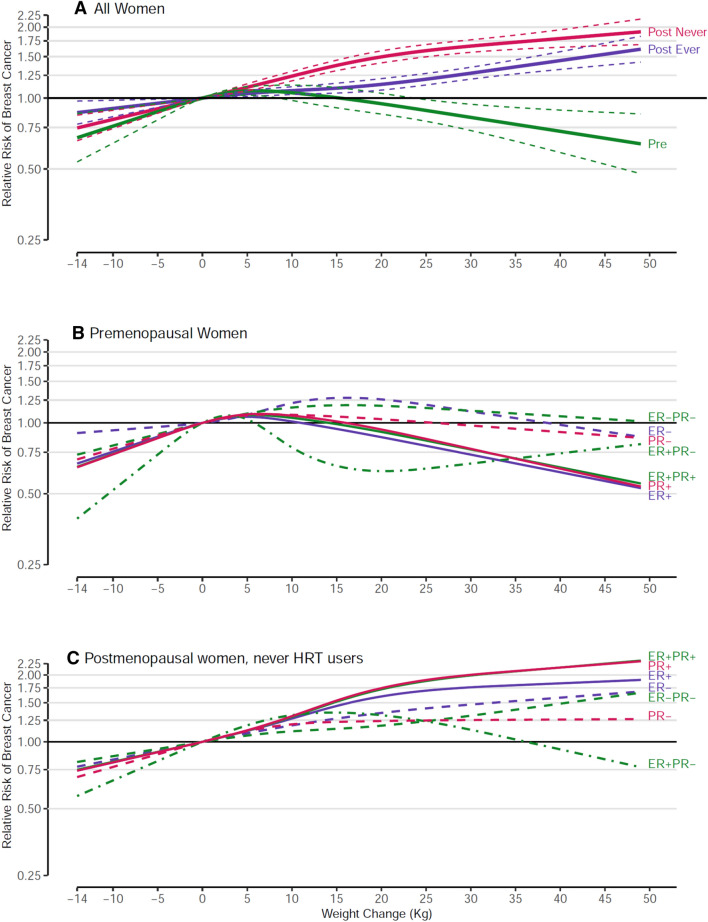Fig. 4.
Spline regression curves for the association between weight change and breast cancer risk, the Pooling Project of Prospective Studies of Diet and Cancer, with reference 0 kg. Panel A shows the associations for overall premenopausal breast cancer (pre; p value, test for nonlinearity < 0.001), overall postmenopausal breast cancer among never users of hormone therapy (post never; p value, test for nonlinearity < 0.001), and overall postmenopausal breast cancer among ever users of hormone therapy (post ever; p value, test for nonlinearity = 0.279). Panel B shows the associations for premenopausal breast cancer subtypes defined by estrogen receptor (ER) and progesterone receptor (PR) status. The p value, test for nonlinearity < 0.001 for ER+, 0.124 for ER−, < 0.001 for PR+, 0.222 for PR−, < 0.001 for ER+ PR+, 0.059 for ER+ PR−, and 0.402 for ER− PR− breast cancer. Panel C shows the associations for postmenopausal breast cancer subtypes defined by ER and PR status among never users of hormone therapy. The p value, test for nonlinearity < 0.001 for ER+, 0.630 for ER−, < 0.001 for PR+, 0.036 for PR−, 0.003 for ER+ PR+, < 0.001 for ER+ PR−, and 0.874 for ER− PR− breast cancer. Models were adjusted for the same factors as in Fig. 2

